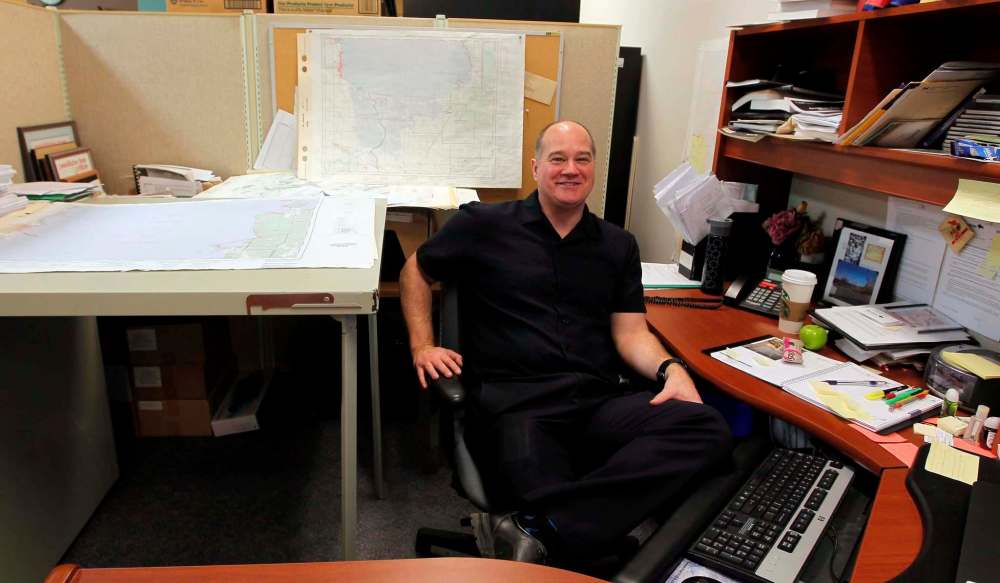What’s in a name? A people’s history
Initiative aims to give more prominence to indigenous roots
Advertisement
Read this article for free:
or
Already have an account? Log in here »
To continue reading, please subscribe:
Monthly Digital Subscription
$1 per week for 24 weeks*
- Enjoy unlimited reading on winnipegfreepress.com
- Read the E-Edition, our digital replica newspaper
- Access News Break, our award-winning app
- Play interactive puzzles
*Billed as $4.00 plus GST every four weeks. After 24 weeks, price increases to the regular rate of $19.00 plus GST every four weeks. Offer available to new and qualified returning subscribers only. Cancel any time.
Monthly Digital Subscription
$4.75/week*
- Enjoy unlimited reading on winnipegfreepress.com
- Read the E-Edition, our digital replica newspaper
- Access News Break, our award-winning app
- Play interactive puzzles
*Billed as $19 plus GST every four weeks. Cancel any time.
To continue reading, please subscribe:
Add Free Press access to your Brandon Sun subscription for only an additional
$1 for the first 4 weeks*
*Your next subscription payment will increase by $1.00 and you will be charged $16.99 plus GST for four weeks. After four weeks, your payment will increase to $23.99 plus GST every four weeks.
Read unlimited articles for free today:
or
Already have an account? Log in here »
Hey there, time traveller!
This article was published 27/01/2017 (3199 days ago), so information in it may no longer be current.
Lake Winnipeg. Lac Winnipeg. Weenipagamik Saguygun.
Provincial road maps already name Manitoba’s largest lake in Canada’s two official languages.
They may one day include a third, the Anishinabe name for Lake Winnipeg. After all, the Winnipeg name is derived from an indigenous language.

It’s part of a provincial initiative to give more prominence to indigenous place names.
Provincial toponymist Des Kappel has started a project to track down historical indigenous names for geographic features in Manitoba.
Current place names and toponyms “give the appearance that indigenous people had never been in southern Manitoba,” he said.
In addition, the Geographical Names Board of Canada is producing an indigenous map of Canada for the country’s 150th anniversary. The map, which should be completed by spring, uses indigenous names only, about 50 to 80 from each province.
Kappel said it will include some well-known Manitoba place names such as Neepawa (meaning “plenty” in Anishinabe), Pinawa (“slow, calm and gentle”), and Wawanesa (Dakota-Sioux meaning “land of no snow”).
It will also include some tongue twisters such as Pekwachnamaykoskwaskwaypinwanik Lake.
It’s Manitoba’s longest place name. It’s a Cree name meaning “a place where people fish with a line for wild trout,” as opposed to net fishing.
The name is 31 characters long, just three fewer than the English language’s longest word: supercalifragilisticexpialidocious. It’s south of Red Sucker Lake, near the Ontario border.
Several years ago, the name caught the fancy of a classroom in Chicago, working on a project of unique place names in North America. The teacher telephoned Kappel for more information.
The best phonetic pronunciation Kappel provides is (Pay kwatch=wild) (namay kos=trout) (kwask waypin=with fishing line) (win ick=place).
As mentioned, Kappel is also tracking down indigenous names from the oral tradition of First Nations people. Poplar River First Nation, on the eastern shore of Lake Winnipeg, is the first to participate in the project.
About 10 volunteers in Poplar River spent more than a year interviewing elders and recording local place names and the stories behind them. According to the province’s criteria, which is synchronized with the rest of Canada, these have to be names that have been in use for generations.
One of the curious names Kappel came across was an island on Poplar River called Kookooko’oosagasawining, which translates as Owl Smoking Island. Kappel said he pictured an owl smoking a wine-tipped cigarillo. However, the name comes from a female elder named Owl who conducted smoke ceremonies on the island.
Another is Ochichakwo Seepeece, which means creek where the cranes land in the spring.
The new names that meet national criteria will be entered into the provincial database. Kappel stresses aboriginal names will not replace names. Where there is already a name, the indigenous version would appear as a dual name. Whether the names ever appear on a provincial road map is up to the cartography office.
Ray Rabliauskas, traditional lands management co-ordinator at Poplar River, said it was important to record names from the oral tradition while elders can still pass down the information. The maps will be available to the community and part of the school curriculum.
Rabliauskas said archaeologists estimate Poplar River descendants date back 6,000 years, and they gave names to describe many places in their traditional region.
“Those names are important. They describe somebody or something that happened there. It’s like a history book,” Rabliauskas said.
“It also shows occupancy. People’s history on the land here is ancient, and other people have to see that.”
bill.redekop@freepress.mb.ca

